The Impact of Ergonomically Designed Safety Equipment on Worker Health
Date Posted:30 October 2024
By investing in equipment that promotes worker health and comfort, businesses can reduce injuries, boost productivity, and create a positive working environment.
The health and safety of employees in any workplace is not just a regulatory requirement but also a critical component of maintaining productivity and morale. One increasingly important aspect of workplace safety is the use of ergonomically designed safety equipment. These tools are specifically engineered to adapt to the worker's physical needs, preventing strain, injury, and long-term health issues. In this blog, we’ll explore how ergonomically designed safety equipment can make a significant difference in worker health and why it should be a priority in every workplace.
What is Ergonomically Designed Safety Equipment?
Ergonomics refers to the science of designing products, systems, and processes that fit the human body and its cognitive abilities. When applied to safety equipment, ergonomics focuses on creating gear that is comfortable, reduces strain, and enhances the user's ability to perform tasks without causing injury or fatigue. Common examples of ergonomic safety equipment include adjustable harnesses, padded gloves, anti-fatigue mats, and well-fitted helmets.
The Role of Ergonomics in Worker Health
When employees use non-ergonomic or poorly designed safety equipment, they may suffer from discomfort, fatigue, and even long-term injuries like musculoskeletal disorders (MSDs). Ergonomically designed safety gear, on the other hand, can improve posture, reduce the risk of repetitive strain injuries, and enhance overall physical well-being. Below are the key ways ergonomically designed safety equipment positively impacts worker health:
1. Reduction of Musculoskeletal Disorders (MSDs)
One of the most common health issues in many industries, particularly those involving manual labour, is musculoskeletal disorders. These conditions can affect the muscles, joints, tendons, and ligaments, leading to pain, discomfort, and reduced mobility. MSDs are often caused by repetitive movements, poor posture, or using improperly designed tools and equipment.
Ergonomically designed equipment, such as supportive back braces or adjustable harnesses, can significantly reduce the risk of MSDs by promoting proper body mechanics and distributing pressure evenly. For example, ergonomically designed gloves provide better grip and reduce strain on the hands and wrists, while anti-fatigue mats help workers who stand for long periods avoid leg and back pain.
2. Increased Comfort and Reduced Fatigue
Comfort plays a crucial role in worker performance. Uncomfortable safety gear can distract workers, reduce their concentration, and ultimately lead to mistakes or accidents. Ergonomically designed equipment enhances comfort, allowing workers to focus on their tasks without feeling restricted or in pain.
For instance, ergonomically designed helmets are lighter and better ventilated, reducing the discomfort of wearing them for extended periods. Similarly, adjustable harnesses and vests distribute weight evenly across the body, reducing strain on the shoulders and back. These small improvements in comfort can make a big difference over a long workday, leading to higher productivity and fewer mistakes.
3. Prevention of Repetitive Strain Injuries (RSIs)
Repetitive strain injuries (RSIs) are caused by performing the same motion repeatedly without proper support. RSIs can lead to chronic pain, loss of function, and decreased mobility, particularly in industries where employees use their hands frequently, such as construction, warehousing, and assembly lines.
Ergonomically designed tools, such as vibration-dampening gloves, can reduce the impact of repetitive movements, preventing injuries over time. Ergonomic lifting aids and trolleys, available at Verdex, also help minimise strain by assisting workers in moving heavy objects without overexerting their bodies.
4. Better Posture and Alignment
Poor posture is a major contributor to back, neck, and shoulder injuries. Equipment that does not support the natural curvature of the spine or forces workers to adopt awkward positions can lead to long-term damage. Ergonomically designed safety gear helps promote proper posture, preventing slouching or unnatural twisting.
For example, ergonomic chairs and standing desks are designed to encourage a neutral spine position, reducing pressure on the lower back. Similarly, tools like harnesses and backpacks are designed to distribute weight evenly across the body, reducing the likelihood of strain on one side of the body.
5. Boosting Mental Well-Being
The physical benefits of ergonomically designed safety equipment also extend to mental well-being. Workers who are comfortable and free from pain are less likely to experience stress and anxiety related to their job. This improved mental state leads to better focus, fewer errors, and an overall more positive work environment.
When workers know that their safety and comfort are a priority, they feel more valued, which can improve job satisfaction and reduce turnover rates. Moreover, reduced physical pain means fewer sick days, helping companies maintain consistent staffing levels and productivity.
Common Examples of Ergonomically Designed Safety Equipment
To ensure your workplace is benefiting from ergonomic safety solutions, consider incorporating the following equipment:
- Ergonomic Helmets: Lightweight, well-ventilated helmets with adjustable straps offer better comfort and fit, reducing neck strain.
- Anti-Fatigue Mats: Used in environments where workers stand for long periods, these mats reduce pressure on the legs and lower back.
- Adjustable Harnesses: Designed for workers in construction or industries that require height safety, ergonomic harnesses distribute weight evenly, reducing shoulder and back strain.
- Ergonomic Gloves: Padded and well-fitted gloves help reduce hand strain and provide better grip, lowering the risk of repetitive strain injuries.
- Ergonomic Chairs: For office or desk-based workers, adjustable chairs that support proper posture can prevent long-term back and neck injuries.
- Supportive Footwear: Properly designed safety boots with arch support can reduce foot fatigue and improve posture for workers who are on their feet all day.
Investing in Ergonomically Designed Equipment: A Long-Term Benefit
While ergonomically designed safety equipment may require a higher initial investment, the long-term benefits far outweigh the costs. By reducing the risk of injuries, employers can avoid expensive compensation claims, downtime due to worker absence, and the costs of rehiring and retraining staff. Additionally, healthier workers tend to be more productive, which directly benefits the company’s bottom line.
At Verdex, we understand the importance of ergonomics in the workplace and offer a wide range of ergonomically designed safety equipment. From gloves and harnesses to anti-fatigue mats and supportive footwear, our products are tailored to ensure that your workforce remains comfortable, safe, and productive.
It can be seen that ergonomically designed safety equipment is more than just a trend—it’s a necessity in today’s workplace. By investing in equipment that promotes worker health and comfort, businesses can reduce injuries, boost productivity, and create a positive working environment. Don’t wait until injuries happen—take proactive steps to ensure your team is equipped with the right tools for the job. Explore the wide range of ergonomic safety solutions available at Verdex and prioritise the well-being of your workforce today.



























































































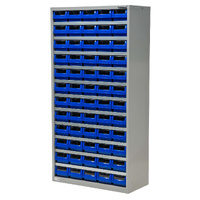




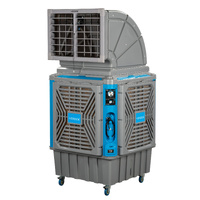











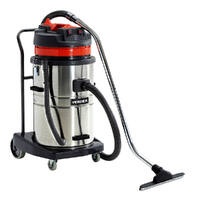



















 Trolleys & Hand Trucks
Trolleys & Hand Trucks Cage Trolleys
Cage Trolleys Cleaning Carts & Trolleys
Cleaning Carts & Trolleys Construction Trolleys
Construction Trolleys Custom Trolleys
Custom Trolleys Hand Trucks & Dollies
Hand Trucks & Dollies Laundry/Linen Trolleys
Laundry/Linen Trolleys Lifting Trolleys
Lifting Trolleys Order Picking Trolleys
Order Picking Trolleys Panel Cart Trolleys
Panel Cart Trolleys Platform Trolleys
Platform Trolleys Powered Trolleys
Powered Trolleys Shelf & Tiered Trolleys
Shelf & Tiered Trolleys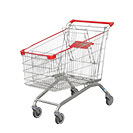 Shopping Trolleys
Shopping Trolleys Stainless Steel Trolleys
Stainless Steel Trolleys Tool Trolleys
Tool Trolleys Utility & Service Carts
Utility & Service Carts Lifting & Handling Equipment
Lifting & Handling Equipment Forklift Attachments
Forklift Attachments Jib Attachments
Jib Attachments Lifting Hoists & Pallet Hooks
Lifting Hoists & Pallet Hooks Load Skates & Tow Tugs
Load Skates & Tow Tugs Manual Stackers & Lifters
Manual Stackers & Lifters Pallet Jacks
Pallet Jacks Pallet Lifters
Pallet Lifters Pallet Rotators & Dispenser
Pallet Rotators & Dispenser Powered Pallet Trucks & Electric Lifters
Powered Pallet Trucks & Electric Lifters Scissor Lift Trolleys and Tables
Scissor Lift Trolleys and Tables Conveyor Equipment
Conveyor Equipment Conveyor Frames & Stands
Conveyor Frames & Stands Roller & Skate Conveyors
Roller & Skate Conveyors Ladders & Access Equipment
Ladders & Access Equipment Container & Yard Ramps
Container & Yard Ramps Ladders & Step Stools
Ladders & Step Stools Work Platforms & Crane Cages
Work Platforms & Crane Cages Drum Handling Equipment
Drum Handling Equipment Drum Storage & Bunding
Drum Storage & Bunding Drum Trolleys & Lifters
Drum Trolleys & Lifters Forklift Drum Handling
Forklift Drum Handling Waste Handling & Bins
Waste Handling & Bins Bin Lifters & Tippers
Bin Lifters & Tippers Plastic Waste & Wheelie Bins
Plastic Waste & Wheelie Bins Steel Waste & Tipping Bins
Steel Waste & Tipping Bins Waste Carts
Waste Carts Dangerous Goods Storage & Spillage
Dangerous Goods Storage & Spillage Aerosol Cans Storage Cages
Aerosol Cans Storage Cages Bunded Pallets & Storage
Bunded Pallets & Storage Corrosive Goods Storage Cabinets
Corrosive Goods Storage Cabinets DG Storage & Trolleys
DG Storage & Trolleys Flammable Liquid Cabinets
Flammable Liquid Cabinets Forklift Gas Storage Cages
Forklift Gas Storage Cages Site Storage
Site Storage Spill Kits
Spill Kits Shelving & Storage Equipment
Shelving & Storage Equipment Stillage & Transport Cages
Stillage & Transport Cages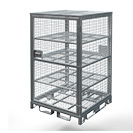 750 Series Cage Configurations
750 Series Cage Configurations Heavy Duty Cabinets
Heavy Duty Cabinets Heavy Duty Shelving
Heavy Duty Shelving Mega Bins & Pallets
Mega Bins & Pallets Packing & Workbenches
Packing & Workbenches Parts Trays & Stor-Pak Bins
Parts Trays & Stor-Pak Bins Pegboard & Louvre Panels
Pegboard & Louvre Panels Plastic Bins & Crates
Plastic Bins & Crates Plastic Handling Solutions Bins
Plastic Handling Solutions Bins Plastic Pallets
Plastic Pallets Stack & Nest Bins
Stack & Nest Bins Pallet Racking Accessories
Pallet Racking Accessories Workplace Equipment
Workplace Equipment Modular Workbenches
Modular Workbenches Electric Height-Adjustable Workbenches
Electric Height-Adjustable Workbenches Floor Matting
Floor Matting General Workplace Equipment
General Workplace Equipment Industrial Weighing Scales
Industrial Weighing Scales Packaging Machinery
Packaging Machinery Stationery Cupboards
Stationery Cupboards Storage and Stillage Cages
Storage and Stillage Cages Tool Trolleys
Tool Trolleys Tooling Cabinets
Tooling Cabinets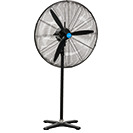 Workshop Fans and Coolers
Workshop Fans and Coolers Safety Barriers, PPE & Signage
Safety Barriers, PPE & Signage Barriers & Bollards
Barriers & Bollards First Aid Equipment
First Aid Equipment Gloves, Knives and PPE
Gloves, Knives and PPE Signage
Signage Cleaning & Site Supplies
Cleaning & Site Supplies Cleaning Equipment
Cleaning Equipment Cleaning Trolleys
Cleaning Trolleys Rubbish Bins
Rubbish Bins Signs & Traffic Supplies
Signs & Traffic Supplies Construction Equipment
Construction Equipment Construction Trolleys
Construction Trolleys Waste Handling
Waste Handling General Site Equipment
General Site Equipment Concrete Equipment
Concrete Equipment Site Storage
Site Storage Lifting Equipment
Lifting Equipment Verdex Specials
Verdex Specials









